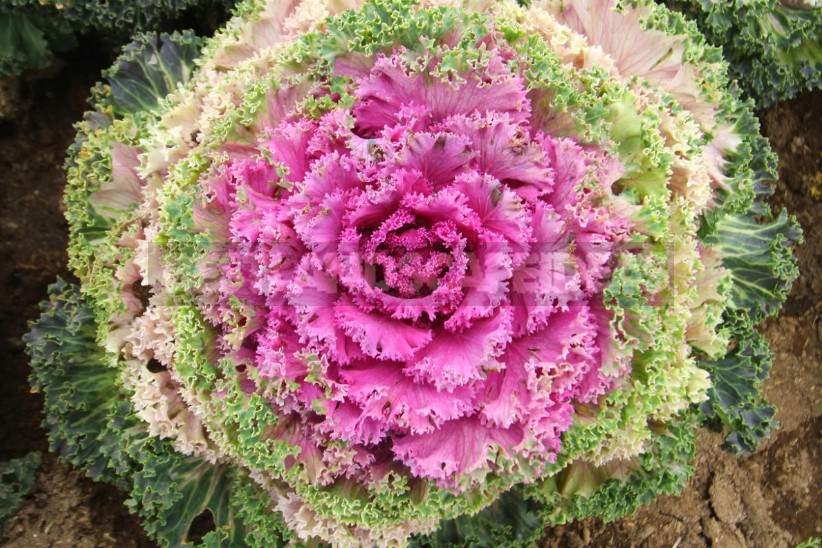
With the arrival of autumn cold weather, most plants become dull or even die. And we so want to delay a little more bright summer and add to the landscape of colorful colors!
It is not necessary to let sadness into your garden. It is worth planting decorative cabbage on your site-an unusually beautiful and unpretentious plant, a spectacular outfit of which will delight the eye until winter.
Plant description
Decorative cabbage (Brassica), classified as Brassica oleracea var. acephala, belongs to the Cruciferous family. It’s edible. This leaf variety has a valuable chemical composition and can act as an excellent vitamin product. After the first autumn frosts Brassica leaves lose their bitter taste and become very tasty.

But in my opinion, this culture should give another role in the suburban area. Its lush leaf socket, blossoming in bright colors, retains its extraordinary decorative effect until winter and withstands frosts to -12°C. and when all other annual cultures have long rest in a compost heap, Brassica continues to show off on the site, lifting the mood with its spectacular outfit and transforming the dull landscape of the autumn site. Therefore, it is better not to plant in the garden, and in the garden and flower garden.

This catchy plant is an excellent composition in a group planting with flower crops, perfect for decorating borders, and more compact varieties will look amazing in garden pots and hanging pots.

Decorative cabbage can do well without “companions” and looks attractive even alone. In this case, to give a greater effect to the solitary planting, you can make a flower bed of several varieties of this culture, which differ in the color of the foliage. And if you want to fill the vast space in the garden to plant a huge number of other herbaceous flowers, in the case of Brassica will be enough only a few plants: leaf socket of some varieties reaches a diameter of more than 0.5 m.

This culture, depending on the variety can have a height of 20 to 130 cm, no less diverse in size and its leaves – 20-60 cm in length and 10-30 cm in width. But particularly striking in their shape and colouring. Leaf plates of decorative cabbage are smooth, wavy, corrugated and dissected, like algae, and their bright color, in addition to all shades of green, also includes pink, purple, Burgundy, purple, yellow and white tones.
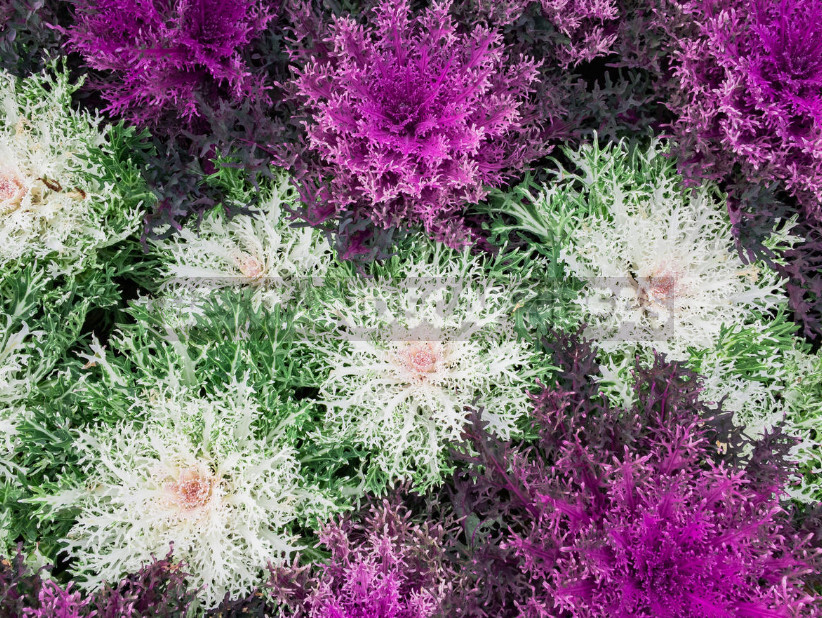
Cultivation
If you get good yields of white cabbage in your garden, then you will not have any problems when growing brassicas – their agricultural machinery is very similar. But novice gardeners should definitely pay attention to the decorative cabbage. This plant is quite unpretentious in care and will require a minimum of knowledge and skills.
Landing
Young Brassica seedlings at the initial stage of growth requires cool, so the easiest way to sow the seeds in mid-April in a greenhouse or under film cover on the site, and then transplant the seedlings to the right place. If you need to get lush sockets early, this culture is grown at home, sowing in mid-March.

For this purpose, pre-wetted seeds are sown in a pre-prepared container filled with a loose fertile substrate. Such a soil mixture can be purchased in the store or prepared by yourself, mixing in equal proportions leaf soil, humus, peat and river sand and adding a bucket of such a composition a couple of glasses of sifted wood ash.
To avoid subsequent picking, decorative cabbage is easier to immediately put in separate containers – cups or cassettes. With this approach, each cell is put in 2 seeds, sinking them to 0.5-1 cm, and after the emergence of shoots, a weaker sprout is removed.
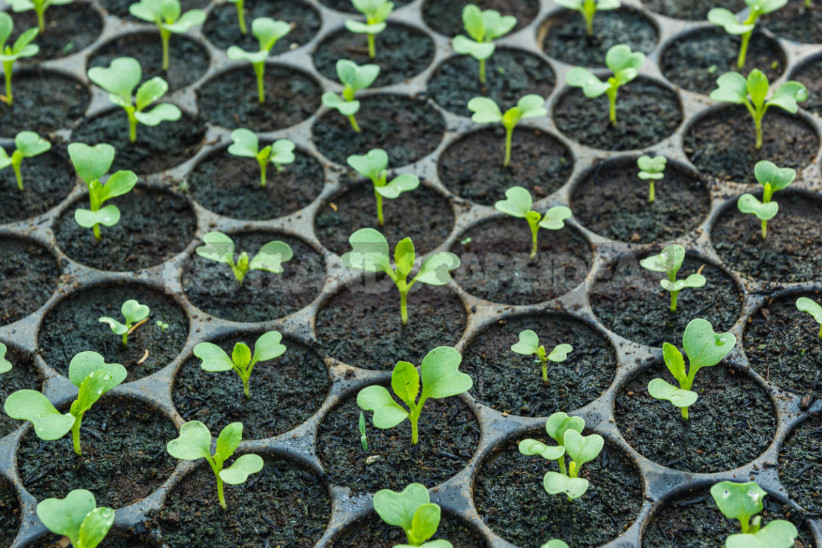
Before the emergence of sprouts, the containers are provided with a temperature of + 18…+20°C (in such conditions, sprouts appear after 3-5 days), and then the regime is changed. In the first week, seedlings are kept in the afternoon at a temperature of +10 … +12°C, and at night at +6…+8°C. in the future, the daytime temperature is maintained at +13…+16°C, and at night +8…+10°C. After emergence, the seedlings are moved to the lightest windowsill, but in cloudy weather, as well as in the mornings and evenings, the plants are additionally illuminated with daylight lamps.
The soil must be constantly maintained in a moderately moist condition. For the period of home stay is good a couple of times to feed the plant with any complex drug according to the instructions. This is done 10-12 days after emergence and again after 12-14 days. Hardened seedlings are planted in the open ground in late April or may (depending on the region).

This culture, unlike their closest cabbage “relatives”, much better transfers transplant. Therefore, seedlings can be planted immediately on a permanent place or on a separate bed in the far corner of the garden, and in the second half of the summer to transplant adult plants with a large lump of land on a flower bed.
Brassica tolerates a small shadow, but it turns out more spectacular if it grows in the sun, so it is better to plant it in an open area. It is also necessary to take care of the composition of the soil in the garden. It should be generously fertilized with humus or compost (about a bucket per 1 m2), make any complex mineral preparation according to the instructions, and if the soil is acidic, be sure to add wood ash for digging (up to 0.5-0.6 kg per 1 m2). Ash, as well as dolomite flour, as a deoxidizer can be made in the spring, but lime-fluff must be sealed in the soil since the autumn.
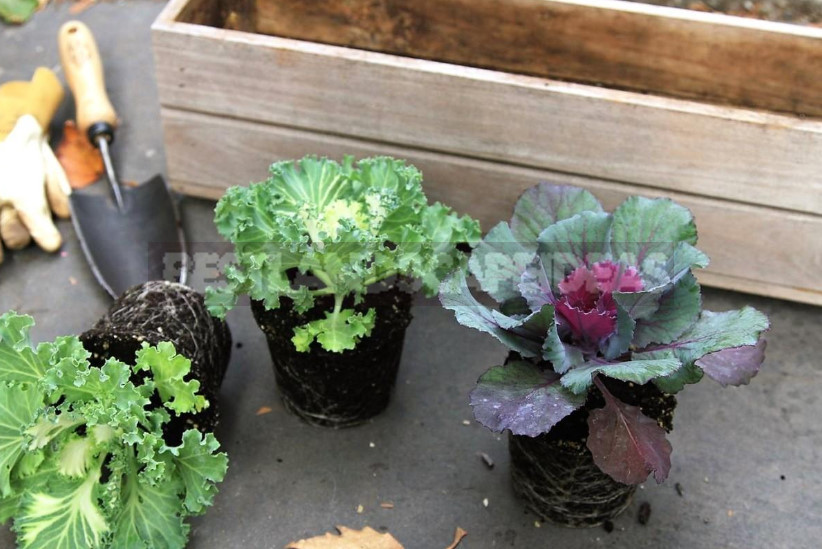
Seedlings are transshipped from glasses planted in wells arranged staggered at a distance of 30-60 cm from each other (depending on the variety). Plants buried in the soil to the first leaves, compacted around the soil and abundantly watered.
Maintenance
Brassica, like all representatives of the Cabbage family, is very moisture-loving. Therefore, if you want to get lush rosettes, do not leave this culture without watering – the soil under it should be constantly, but moderately moistened.
To protect the plant from the defeat of fungal diseases, watering must be carried out and defended by sun-heated water. In addition to watering the roots, treat ornamental cabbage sprinkling from a watering can – she loves to “swim”.
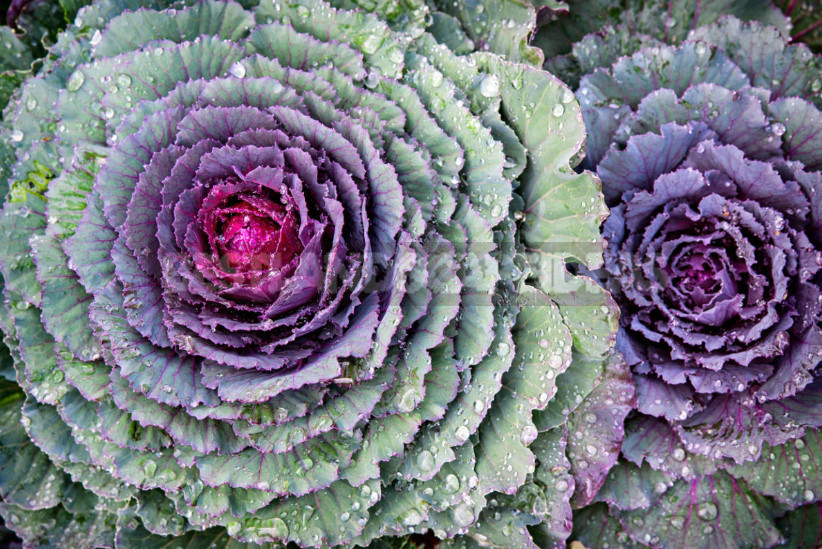
In order to reduce the amount of watering, the soil under the plants you can mulch with any materials at hand – dried with weeds after weeding, straw, rotted sawdust, shavings, etc. Layer of mulch in the garden will also deter weed growth and will save you from having to loosen the aisles after each wetting.
Decorative cabbage by the end of the season increases quite a weighty rosette of leaves, which sometimes falls to the ground, not keeping on the stem. Therefore, during the season it is necessary to periodically sprinkle the soil to its base.

Keep this owner of magnificent forms on a diet is not necessary – it is very responsive to feeding. Depending on the fertility of the soil on the site, the season is carried out from 2 to 5 fertilizing. In this case, preference should be given to complex mineral or organomineral drugs. It is necessary to avoid an overabundance of nitrogen in a diet of this beauty who because of it will not want to change the “clothes” from monophonic green to multi-colored.
Read the rest of the article Decorative Cabbage: Planting and Care, Types and Variations (Part 2)!
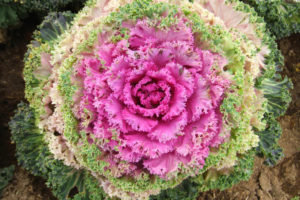

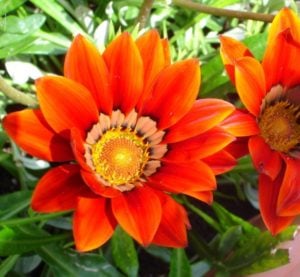

Leave a Reply